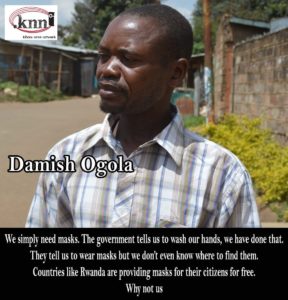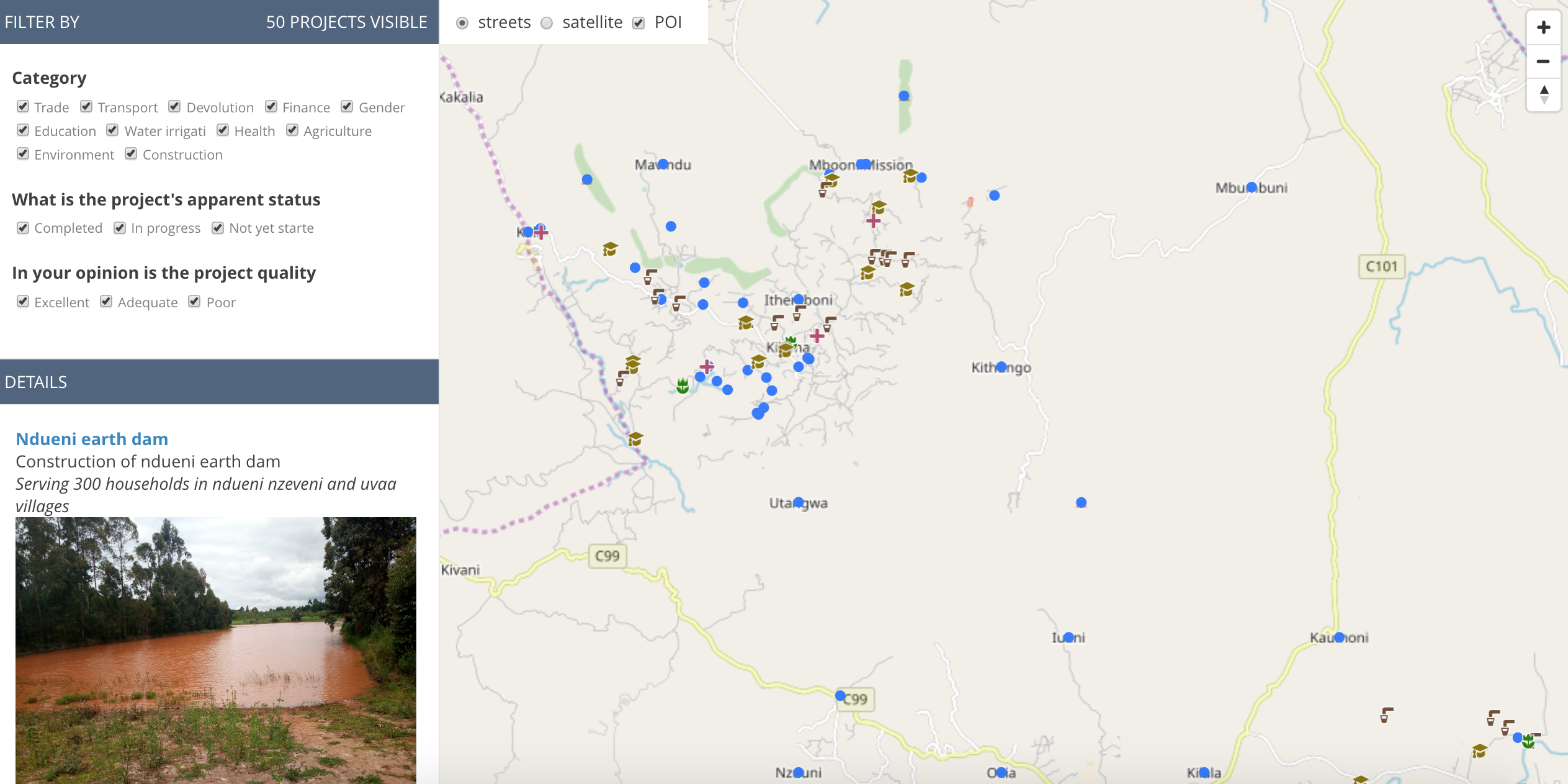by: Erica April 10th, 2020 comments:
Please help Map Kibera’s Covid-19 efforts by donating now via Global Giving! 
As cases of coronavirus continue to mount in Kenya, Map Kibera has launched the Kenya Covid-19 Tracker. The tracker uses Ushahidi’s platform to track cases throughout the country, related news, and key initiatives underway to help citizens. Map Kibera has details on many Kibera-related resources, and is working with other organizations to include country-wide efforts to help prevent the spread of the virus and address hardships of the social restrictions.Â
 Meanwhile, the Kibera News Network team has several initiatives underway:
Meanwhile, the Kibera News Network team has several initiatives underway:
- Covering the pandemic’s effects on video, and how it is affecting people in Kibera;
- Sharing out information and dispelling rumors via their WhatsApp broadcast group (to join, save +254794590404 to your phone and type us your name). Residents are asking questions to KNN about the virus, and KNN shares out daily updates on case tallies and latest government initiatives, health advice, resources, etc.
- A new Humans of Kibera series with opinions and quotes from people about Covid.

Using the Covid Tracker, Map Kibera and the KNN team are mapping not only new Covid-19 cases daily, but also work that organizations and individuals throughout the country are doing to try to help during this outbreak, like distributing food and face masks, setting up hand-washing stations, and more. Initiative leaders can also submit their own posts about what they are doing. Map Kibera is additionally mapping news items related to the virus, like articles from major new sources and tweets and social media. We are verifying all posts.
We want organizations to share their own work too using our tracker. Several Kenyan organizations are already using it to map their own work. Click here to share a resource with us!
We’ve set up a Global Giving fundraising page for these efforts. Please check it out here and support us if you can!
by: Erica July 17th, 2018 comments:

Kenya’s devolution process and constitutional reforms of 2010 means that Kenya’s counties, of which there are now 47, are directly responsible for a much greater amount of their local development. Some counties have integrated citizen participation in planning by embarking on an intensive annual participatory budgeting process, with support from the World Bank. But, in order to allow communities to directly plan and budget for development, counties realized that they needed better information about existing projects and features, best represented geographically. Many times, participatory budgeting (PB) groups were relying on memory or on hand-drawn paper maps of existing terrain and features in order to determine where they should place new water points, health centers, and other key new projects.
To help fill this gap, Map Kibera Trust, along with GroundTruth Initiative, have begun to work with two pilot counties, Makueni and Baringo, to create participatory digital maps with both citizen and county government mappers. Makueni has already been mapped in two pilot wards, including collecting feedback on county development project status and quality. Please see the maps here.

The base map data is, of course, gathered on OpenStreetMap – including various key features such as roads, shops, landmarks, schools, as well as the PB projects themselves. However, the mappers also collect project feedback information using Open Data Kit (ODK) and store it separately. The digital maps are then created using MapBox tools to combine them together. While mapping, participants mark whether the project is completed or not, whether it’s in good shape or poor, and add a sentence about the project’s quality or impact. We intend for this aspect to be updated regularly in preparation for the annual budgeting meetings, so that citizens can get a sense of how their intended projects are faring. Therefore, the map also allows those who take part in the budgeting process to see the extent to which the county is doing what they had intended. Each PB meeting will receive a printed map, so as not to have to rely on digital maps in locations with very little internet connectivity or even electricity.

Mobile data collection using ODK in Mbooni ward, Makueni.
Check out this great video showing the mapping in Mbooni ward of Makueni county, also illustrating the challenges of working across rural terrain. By engaging young residents of each locale, we hope to spread participatory mapping throughout Kenya, county by county.
by: Erica November 7th, 2017 comments:
Open Schools Kenya has been recently updated, and we are now starting to add schools in Mathare! Working with Youth Mappers chapter at the University of Nairobi, Map Kibera has so far covered the “Mathare Village” area.  We are working to expand coverage to the entire Mathare slum, where Map Kibera has previously mapped and worked with citizen journalists (see Voice of Mathare and Map Mathare). OSK is also updated with new information on Kibera schools, including a number of closures, relocations, and new schools. Simply keeping the data current on the Kibera schools is a challenge, but schools are often in touch about changes. And, keeping our eyes and ears on the latest happenings in the community is after all what we do best.
The total number of mapped schools is now 415, including 355 in Kibera and 59 in Mathare. We hope to have all of Mathare covered in the next few months, and continue to expand coverage in 2018 to other areas of Nairobi and Kenya.
Please also see this recent research about Map Kibera for Making All Voices Count, which particularly notes OSK’s local impacts as a major achievement for open community data!


 Meanwhile, the Kibera News Network team has several initiatives underway:
Meanwhile, the Kibera News Network team has several initiatives underway:



